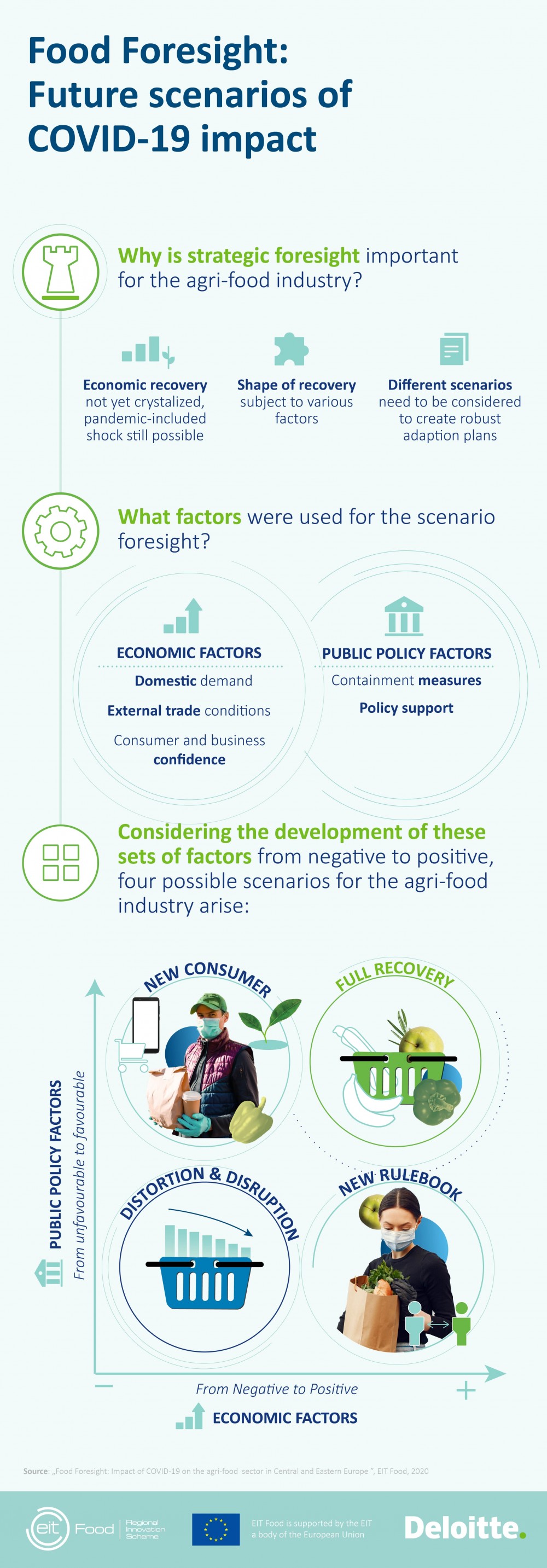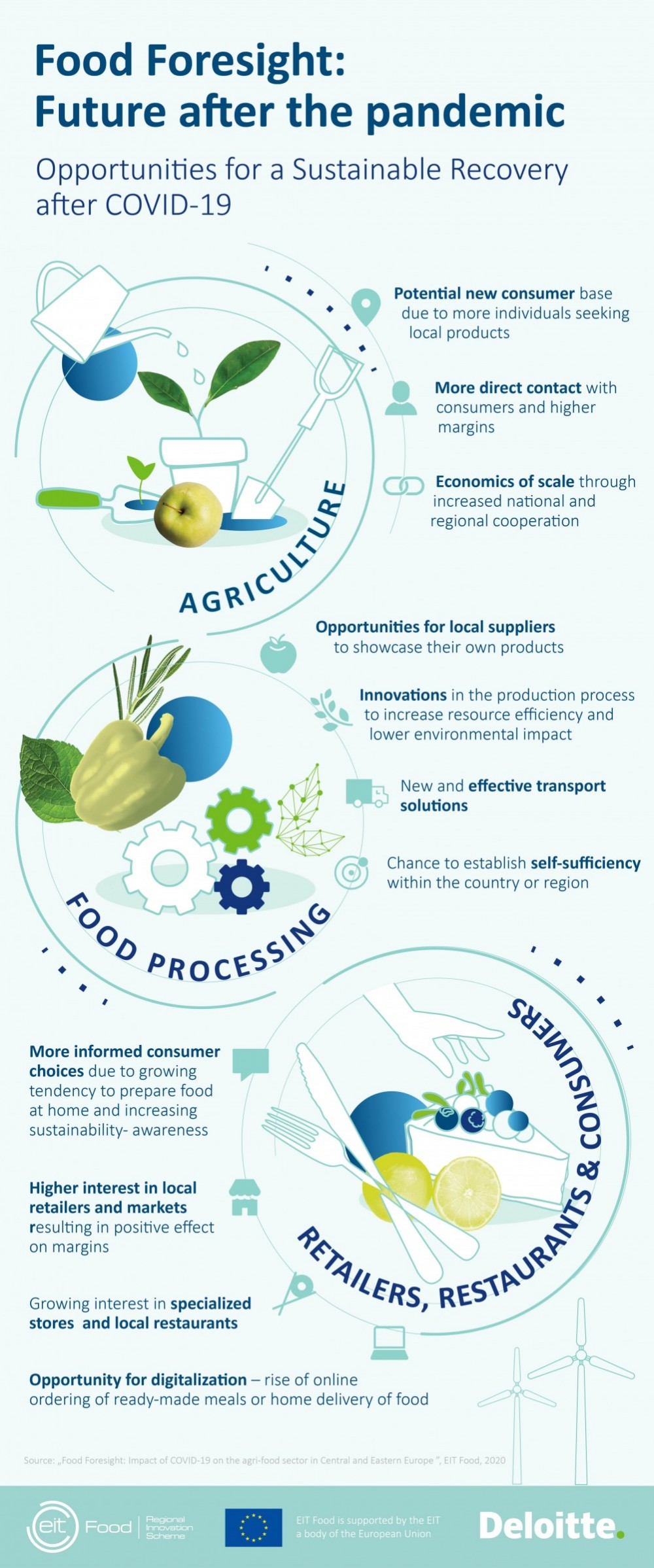
Will agrifood sector in Central and Eastern Europe be able to innovate thanks to or despite of COVID19?
Agri-food entrepreneurs in Central Eastern Europe should take up the challenge to innovate in these disruptive times. In order to do so they need to count on the support of their governments, given the importance of their activities for the economic growth of countries – more significant than in Western European countries.
Learn more from the report Food Foresight that presents a regional perspective, as well as sections dedicated to each country. It can be downloaded at http://eitfood.eu/food-foresight.
2020 has become the year of adjusting to uncertainty and learning how to act without having a clear vision of even the most approximate future. All sectors of the economy had to adapt to the new circumstances and so did agrifood. COVID19 has changed the way European citizens consume and purchase food, it impacted supply chain and food production. Is it just a short term disruption after which everything will get back to normal? Shall we get used to the online groceries, meals delivered to home instead of being consumed in restaurants, temporal lockdowns limiting the supply chain capacities due to restrictions in transport? There is no clear answer, but identifying potential future scenarios of the developments in agrifood sector based on megatrends and deep analysis of available data might help us understand what is coming. In September 2020 Ursula van der Leyen introduced the overarching Strategic Foresight agenda, that will chart EU political priorities and key initiatives in Commission Work Programmes. “In these challenging times, political leaders have to look wide and far ahead” – she said. Such challenging times might also bring opportunities, especially to the region which still requires efforts to stimulate innovation and growth. Central and Eastern European countries are ready to move to the next level of innovativeness in agrifood. Opportunities arising from the COVID19 might become a catalyst to accelerate this change. This is the main goal standing behind the Food Foresight report published by EIT Food in cooperation with Deloitte.
A matrix of four different scenarios based on the potential development of pandemic combined with public support measures and economic factors such as external trade and internal demand allows navigating through various potential consequences of the COVID19 crisis for the agrifood sector. A Full Recovery, A New Consumer, A New Rulebook, Distortion & Disruption are the scenarios which set a framework to analyse potential opportunities for sustainable recovery.

The agrifood sector confirmed its resilience and ability to adjust to change through 2020. Initial decreases in food production and consumer demand were much lower than in other categories of products. In addition, already in July 2020, the numbers got back to the levels from the same time in 2019. Some could even argue that agrifood is so stable that it is not really impacted by one of the biggest crises of XXI. However, the first “victim” of the pandemic that comes to our minds are empty restaurants and thousand of people without jobs due to restrictions in operations of HoReCa. The agrifood sector has many different layers and cannot be assessed only by simple measures of food supply and demand.
The big question that arises for the agrifood sector is whether is it future-proof or future-ready? The big consumer base in CEE, that allows food companies to keep their revenues despite the crisis might become a hindering factor for innovation. Having basic stability of the sector in these disturbing times should rather encourage agrifood players to innovate and take certain risks, that could give an additional boost for Central European countries to bring new ideas “from farm to fork”.
An important tool in this transition is The European Green Deal that should not only be seen as a challenge that Central and Eastern European governments and agri-food markets have to deal with but as an opportunity they face. Further development of the region's transport infrastructure is needed, contributing to the acquisition of new markets, driving the growth of SMEs, and thus improving the scale of the industry's activities. Finally, in response to changing consumer preferences, it is also necessary to undertake marketing and promotional measures for agri-food companies.
If you are interested in Strategic Foresight analysis for Southern Europe we encourage you to learn more HERE.

More News from EIT Food North & East


